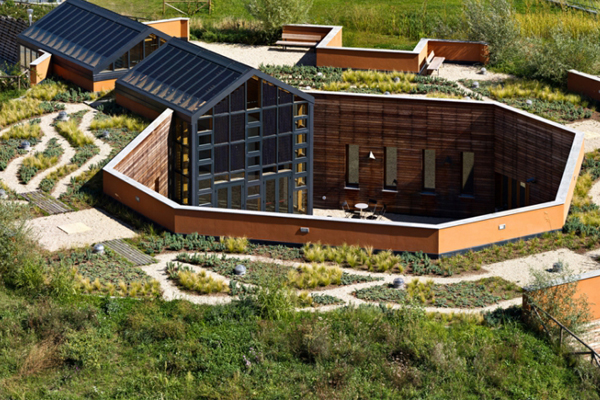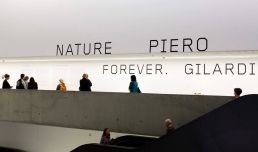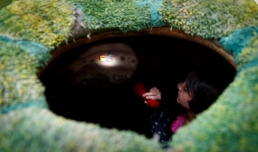exhibition
13 April 2017 > 15 October 2017
valid until 9 April due to the Museum’s first-floor closing
buy online
the only open ticket, valid for 100 years, for one admission to the Museum and all current exhibitions
buy online
valid for access to the Museum during the last opening hour, available online and at the Museum’s digital ticket point only
upon presentation of the membership Card or Carta EFFE
buy online
minors under 18 years of age; disabled people requiring companion; EU Disability Card holders and accompanying person; MiC employees; European Union tour guides and tour guides, licensed (ref. Circular n.20/2016 DG-Museums); 1 teacher for every 10 students; ICOM members; AMACI members; journalists (who can prove their business activity); myMAXXI membership cardholders; European Union students and university researchers in Art and Architecture, public fine arts academies (AFAM registered) students and Temple University Rome Campus students from Tuesday to Friday (excluding holidays); IED – Istituto Europeo di Design professors, NABA – Nuova Accademia di Belle Arti professors, RUFA – Rome University of Fine Arts professors; upon presentation of ID card or badge – valid for two: Collezione Peggy Guggenheim a Venezia, Castello di Rivoli Museo d’Arte Contemporanea, Sotheby’s Preferred, MEP – Maison Européenne de la Photographie; on your birthday presenting an identity document
for groups of 12 people in the same tour; myMAXXI membership card-holders; registered journalists with valid ID
buy online
under 14 years of age
buy online
disabled people + possible accompanying person; minors under 3 years of age (ticket not required)
book online
MAXXI’s Collection of Art and Architecture represents the founding element of the museum and defines its identity. Since October 2015, it has been on display with different arrangements of works.


The first section is devoted to work from the Sixties and includes, alongside Macchina per discorrere from 1963 (one of the artist’s first works), a device through which one can speak that seems to have come from the future, Terrazza, a structure similar to a stilt house, created for the 1966 exhibition Arte Abitabile at the Galleria Sperone in Turin and reconstructed for the first time for this show. Then there are the Nature-carpets that have made him famous, sculptures in expanded polyurethane, hyperrealistic but artificial representations of natural scenes, a kind of “disguise”, a ritual exorcising the death of nature, Igloo (1964) which the public could enter and sit down and a number of Natur-clothes created for performances presenting man’s original relationship with the natural world, all works that lead back to the idea of art that is usable and “habitable” by the public.

The third section features Gilardi’s political animations, from the Sixties to the present, some of which are on show in a museum of the first time.When, in the late Sixties, he realised that militancy did not enjoy the space in the world of art he had hoped for, Gilardi lost interest in the production of “works of art” and devoted himself to creating “useful” works in the political and social ambit, working in psychiatric institutions, factories and working class areas and collaborating with the student movement. This section features Andreotti Volante (1977) and the mask of Agnelli (1977) used in protests in the Seventies, the Masso della Crisi (2012), an inflatable made for the May 1st march, and numerous other projects and costumes made to criticize the political class, defend the environment and civil rights, arouse awareness of peace and tolerance in what has been defined as a “carnivalization” of the artist’s world.

The floor of Gallery 3, completely covered with artificial turf, features works such as Ipogea (2010), a cavern that offers the possibility of an evocative exploration, Aigues Tortes (2007), a log on which you can sit and listen to the sounds of the natural park in Spain from which it takes its name. These works are part of that strand of research that from the 1980s led the artist to adopt technology allowing the spectator to actively participate by interacting with the art. Also on show is the multimedia work Inverosimile (1989), presented on the cusp between the Eighties and Nineties at the Castello di Volpaia and in New York, Paris and Lyon and now exceptionally reinstalled for the first time in an Italian museum.This large-scale interactive installation,which is activated by the breath of the spectators and moves and produces sounds, represents a vine in expanded polyurethane that, like the Carpets, present an image of an evidently artificial nature, a total, immersive and interactive environment which the public is invited to enter for a multi-sensorial experience. Sitting on the large green patch of grass the works of this section come together to reproduce the context of the PAV Parco Arte Vivente, Gilardi’s lifelong commitment to creating a community of eco-art.

The fourth and final section presents Gilardi the curator and critic. Between 1967 and 1969 the artist made numerous trips to the United States, Sweden, Holland, Germany and Britain; he was a correspondent for Flash Art, the American Arts Magazine, the Swedish Konstrevye and the French Robho; he was in contact with a multitude of artists. Less known is his role in the staging of two fundamental exhibitions in 1969: When attitudes become form and Op Losse Schroeven curated respectively by Harald Szeeman and Wim Bereen. This extremely intensive period is illustrated through archive materials recounting Gilardi’s abandoning of the “art system” in favour of more direct action “within life”, as shown in his political and social work and the project for PAV Parco Arte Vivente, Turin’s Living Sculpture Park, a Contemporary Art Centre, a “museum beyond the museum” opened in 2008 and conceived as single living organism that rather than possessing traditional works is a naturalistic area studded with installations to be constantly tended to through cultural animation and gardening.






Gallery 3
curated by Hou Hanru, Bartolomeo Pietromarchi and Marco Scotini
Art must become part of life, but as life is alienated, we also need to commit to liberating and disalienating life. Piero Gilardi
With over 60 works, from the famous Nature-carpets to the interactive installations and through to the Living Art Park of Turin, along with important pieces exhibited for the first time in years or reconstructed for the occasion, the exhibition reviews the career of a master for whom art and life are identified with and become militant commitment, starting out from that as an ecologist.
Fifty-year career in which art, criticism and politics are intertwined
From the complex relationship between man and nature, it investigates the era of consumerism and the use of new technologies in a presentation tackling and exploring themes such as ecology, the relational nature of art and social and political commitment.It is divided into four sections, each of which includes both works and archive materials (sketches, texts, original photographs, small works) allowing a comprehensive overview of the artists thinking and poetic.
DISCOVERING THE EXHIBITION | 360° TOUR
THE INHABITABLE ART
POLITICAL ANIMATION
NEW MEDIA ART
THE THEORIST AND THE ACTIVATOR
Cataloghi della mostra
Exhibition catalogue 2017
Nature Forever. Piero Gilardi